
The National Security Act of 1947 was a law enacting major restructuring of the United States government's military and intelligence agencies following World War II. The majority of the provisions of the act took effect on September 18, 1947, the day after the Senate confirmed James Forrestal as the first secretary of defense.
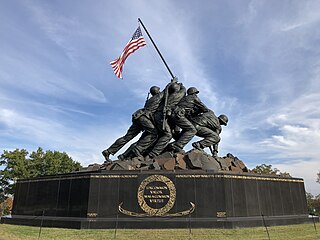
The United States Marine Corps War Memorial is a national memorial located in Arlington Ridge Park in Arlington County, Virginia. The memorial was dedicated in 1954 to all Marines who have given their lives in defense of the United States since 1775. It is located in Arlington Ridge Park within the George Washington Memorial Parkway, near the Ord-Weitzel Gate to Arlington National Cemetery and the Netherlands Carillon. The memorial was turned over to the National Park Service in 1955.

Louis Arthur Johnson was an American politician and attorney who served as the second United States secretary of defense from 1949 to 1950. He was the assistant secretary of war from 1937 to 1940 and the 15th national commander of the American Legion from 1932 to 1933.

Emory Scott Land was an officer in the United States Navy, noted for his contributions to naval architecture, particularly in submarine design. Notable assignments included serving as Chief of the Navy's Bureau of Construction and Repair during the 1930s, and as Chairman of the U.S. Maritime Commission during World War II.

Carl Vinson was an American politician who served in the U.S. House of Representatives for over 50 years and was influential in the 20th century expansion of the U.S. Navy. He was a member of the Democratic Party and represented Georgia in the House from 1914 to 1965. He was known as "The Father of the Two-Ocean Navy". He is the longest-serving member of the United States House of Representatives from the state of Georgia. From 1961 to 1965, he served as the Dean of the US House of Representatives as the longest serving member of the body.

Admiral of the Navy was the highest-possible rank in the United States Navy, prior to the creation of fleet admiral in 1944. The rank is considered to be at least equivalent to that of a five-star admiral, with Admiral George Dewey being the only officer to be appointed to the rank.
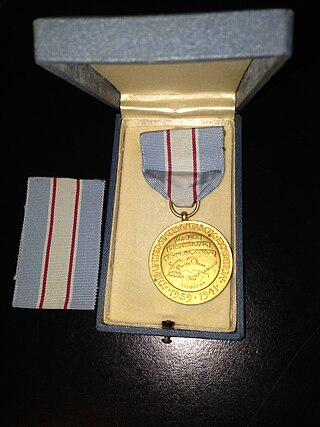
The United States Antarctic Expedition Medal is a combined military-civilian award that was authorized by the United States Congress on September 24, 1945 under Public Law 185 of the 79th Congress. The award recognizes members of the United States Antarctic Expedition of 1939–1941. There were gold, silver, and bronze versions. It is unclear if the gold version is considered a Congressional Gold Medal, as was the case with the 1st Byrd expedition.
The United States Navy Working Capital Fund (NWCF) is a branch of the family of United States Department of Defense (DoD) Working Capital Funds. The NWCF is a revolving fund, an account or fund that relies on sales revenue rather than direct Congressional appropriations to finance its operations. It is intended to generate adequate revenue to cover the full costs of its operations, and to finance the fund's continuing operations without fiscal year limitation. A revolving fund is intended to operate on a break-even basis over time; that is, it neither makes a profit nor incurs a loss.

The George Washington Memorial Parkway, colloquially the G.W. Parkway, is a 25-mile-long (40 km) limited-access parkway that runs along the south bank of the Potomac River from Mount Vernon, Virginia, northwest to McLean, Virginia, and is maintained by the National Park Service (NPS). It is located almost entirely in Northern Virginia, except for a short portion of the parkway northwest of the Arlington Memorial Bridge that passes over Columbia Island in Washington, D.C.
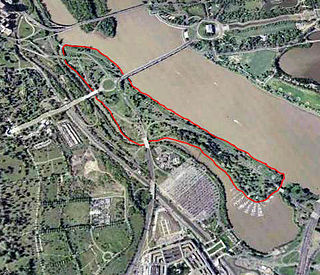
Lady Bird Johnson Park, formerly known as Columbia Island until 1968, is an island located in the Potomac River in Washington, D.C., in the United States. It formed naturally as an extension of Analostan Island in the latter part of the 1800s, and over time erosion and flooding severed it from Analostan, now known as Theodore Roosevelt Island.
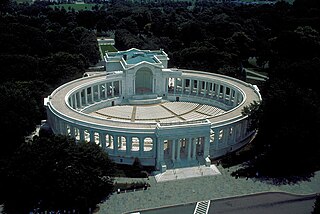
Memorial Amphitheater is an outdoor amphitheater, exhibit hall, and nonsectarian chapel located in Arlington National Cemetery in Arlington County, Virginia, in the United States. It was designed in 1913 as a replacement for the older, wooden amphitheater near Arlington House. Ground was broken for its construction in March 1915 and it was dedicated in May 1920. In the center of its eastern steps is the Tomb of the Unknown Soldier, dedicated in 1921. It has served as the site for numerous Veterans Day and Memorial Day events, as well as for memorial services and funerals for many individuals.

The United States Navy Memorial is a memorial in Washington, D.C. honoring those who have served or are currently serving in the Navy, Marine Corps, Coast Guard, and the Merchant Marine.

Henry Lawrence Garrett III served as the 68th Secretary of the Navy from May 15, 1989, to June 26, 1992, in the administration of George H. W. Bush. Before leading the Department of the Navy, he served as General Counsel of the Department of Defense.
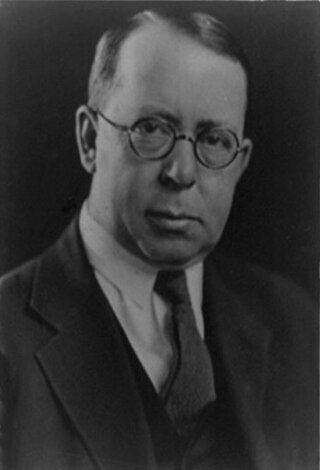
Louis Convers Cramton was a politician and jurist from the U.S. state of Michigan.
The Bureau of Steam Engineering was a bureau of the United States Navy, created by the act of 5 July 1862, receiving some of the duties of the former Bureau of Construction, Equipment and Repair. It became, by the Naval Appropriation Act of 4 June 1920, the Bureau of Engineering (BuEng). In 1940 it combined with the Bureau of Construction and Repair (BuC&R) and became the Bureau of Ships (BuShips).

Consolidated and Further Continuing Appropriations Act, 2013 was a bill passed by the United States House of Representatives of the 113th United States Congress. The bill prevented a government shutdown and funded the federal government through September 30, 2013 as it replaced a continuing resolution which expired on March 27, 2013.

The Military Construction and Veterans Affairs, and Related Agencies Appropriations Act, 2014 is an appropriations bill that was introduced into the United States House of Representatives during the 113th United States Congress. The bill would appropriate money to various government agencies related to the United States Department of Defense and the United States Department of Veterans Affairs. This funding would be used during fiscal year 2014, which ends September 30, 2014. According to its committee report, "the purpose of the bill is to support our military and their families and provide the benefits and medical care that our veterans have earned for their service." The report also indicated that the Committee had made its decisions with the national debt and budget deficit in mind.

The Arts of War and The Arts of Peace are bronze, fire-gilded statue groups on Lincoln Memorial Circle in West Potomac Park in Washington, D.C., in the United States. Commissioned in 1929 to complement the plaza constructed on the east side of the Lincoln Memorial as part of the Arlington Memorial Bridge approaches, their completion was delayed until 1939 for budgetary reasons. The models were placed into storage, and the statues not cast until 1950. They were erected in 1951, and repaired in 1974.















